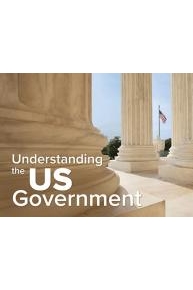
English in America: A Linguistic History
Where to Watch English in America: A Linguistic History
Watch English in America: A Linguistic History Season 1 Episode 12 Now
Watch English in America: A Linguistic History Season 1 Episode 11 Now
Watch English in America: A Linguistic History Season 1 Episode 10 Now
Watch English in America: A Linguistic History Season 1 Episode 9 Now
Watch English in America: A Linguistic History Season 1 Episode 8 Now
Watch English in America: A Linguistic History Season 1 Episode 7 Now
Watch English in America: A Linguistic History Season 1 Episode 6 Now
Watch English in America: A Linguistic History Season 1 Episode 5 Now
Watch English in America: A Linguistic History Season 1 Episode 4 Now
Watch English in America: A Linguistic History Season 1 Episode 3 Now
Watch English in America: A Linguistic History Season 1 Episode 2 Now
Watch English in America: A Linguistic History Season 1 Episode 1 Now

English in America: A Linguistic History from The Great Courses Signature Collection offers an in-depth exploration of the fascinating and complex journey of the English language as it evolved throughout the United States. Aimed at language enthusiasts, history buffs, and anyone interested in the dynamic interplay between culture and communication, this series breaks down the historical and linguistic milestones that have shaped American English.
The course is structured into engaging lectures that combine scholarly insight with relatable anecdotes, making it accessible to a broad audience. The instructor, a noted linguist, guides viewers through the rich tapestry of influences that have molded the English spoken in America, tracing its roots from the colonial era to contemporary society.
One of the primary themes of the series is the diversity inherent within American English. The lectures highlight how English in the United States was not a monolithic entity but rather a mosaic of dialects and variations shaped by factors such as geography, immigration, social class, and cultural intersection. Each regional dialect is presented with its unique characteristics, showcasing how historical migration patterns have introduced elements from Indigenous languages, as well as from languages brought by immigrants, such as Spanish, German, and Irish.
Furthermore, the series dives into significant events that impacted the evolution of English in America, including the Revolutionary War, the Civil War, and the expansion westward. Each of these milestones brought about shifts in language use and societal attitudes, which are meticulously examined. The course also emphasizes how technological advancements and media have played crucial roles in disseminating language and popularizing certain dialects, contributing to a more unified, yet diverse, linguistic landscape.
Throughout the lessons, the instructor employs a variety of pedagogical strategies, including storytelling, historical anecdotes, and linguistic analysis, to engage the audience. This approach helps demystify concepts such as phonetics, syntax, and semantics, allowing viewers to cultivate a deeper understanding of language and its social implications. The instructor's passion for the subject matter comes through, making the learning experience both informative and enjoyable.
In addition to examining the evolution of American English, the series encourages viewers to consider the broader implications of language as a tool of identity, power, and cultural expression. The course prompts viewers to reflect on their own language use and the implicit biases that may accompany it. By highlighting issues such as language prestige, social stratification, and the linguistics of race and ethnicity, this series opens up broader conversations about social justice, inclusion, and the ongoing relevance of language in shaping human connections.
The course also tackles linguistic change head-on, discussing how language evolves through time and the factors that spur such transformations. The idea that language is a living entity subject to change, influenced by social, cultural, and technological developments, is a recurring theme. Concrete examples, such as the impact of the Internet and social media on language, serve as contemporary case studies that illustrate how American English continues to evolve in real-time.
Another notable aspect of the series is its exploration of special topics within American English, including slang, jargon, and the influences of pop culture. By examining phenomena like the rise of internet vernacular and the pooling of language from different media, viewers gain insight into the dynamic nature of language in everyday life. These discussions highlight how language and culture intertwine, influencing not just how we communicate but also how we perceive one another.
Throughout the course, viewers are encouraged to engage critically with the material, considering the historical context alongside the contemporary relevance of the topics discussed. This critical engagement fosters a sense of curiosity about language and its evolution, prompting learners to observe their linguistic environment with a newfound appreciation for the diverse strands that contribute to American English.
English in America: A Linguistic History is designed for everyone, whether you're an academic, a student of linguistics, or simply someone with a keen interest in language and culture. The series ultimately affirms that language is not only a means of communication but also a reflection of our collective history, identity, and social fabric.
By the end of the course, viewers will have acquired a richer understanding of the linguistic history of America, along with the tools to analyze and appreciate the nuances within their own language use. This engaging exploration is sure to leave a lasting impression, inspiring audiences to think critically about the words they use and the stories those words convey.
English in America: A Linguistic History is a series categorized as a new series. Spanning 1 seasons with a total of 12 episodes, the show debuted on 2016. The series has earned a no reviews from both critics and viewers. The IMDb score stands at undefined.
How to Watch English in America: A Linguistic History
How can I watch English in America: A Linguistic History online? English in America: A Linguistic History is available on The Great Courses Signature Collection with seasons and full episodes. You can also watch English in America: A Linguistic History on demand at Amazon Prime, Amazon online.






























